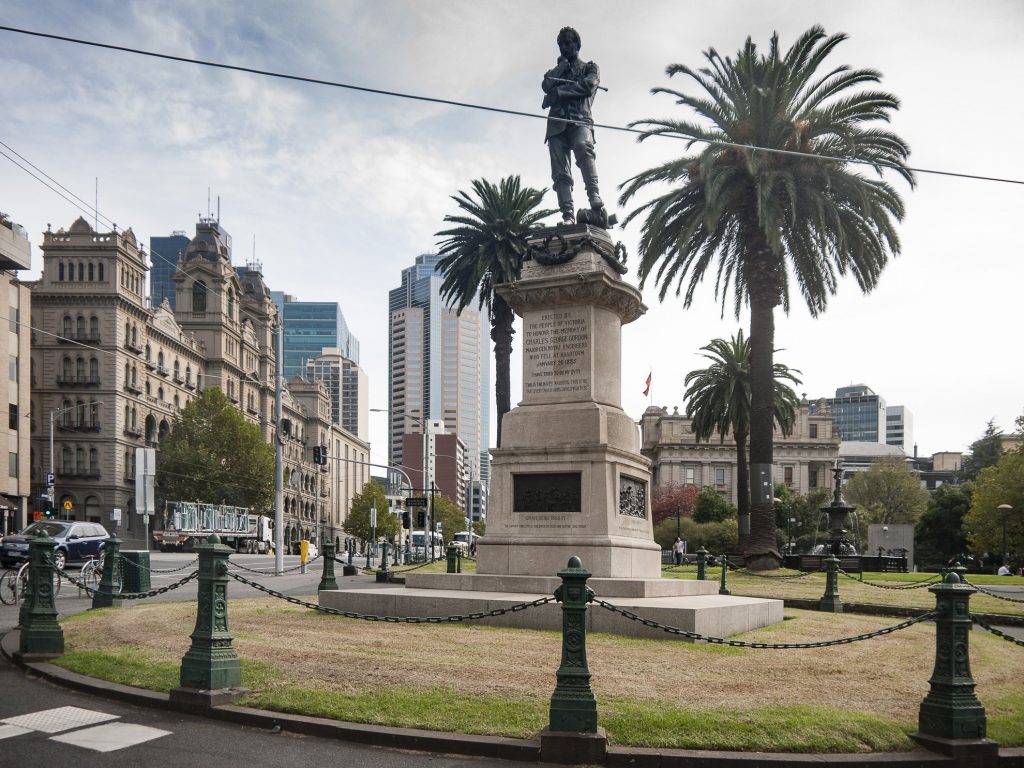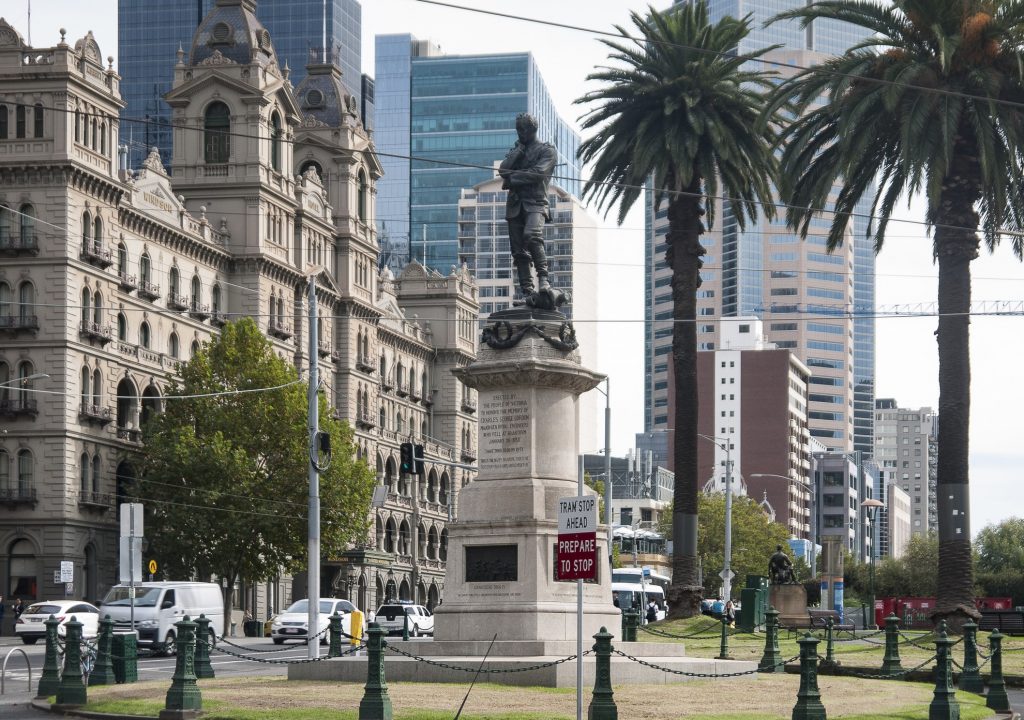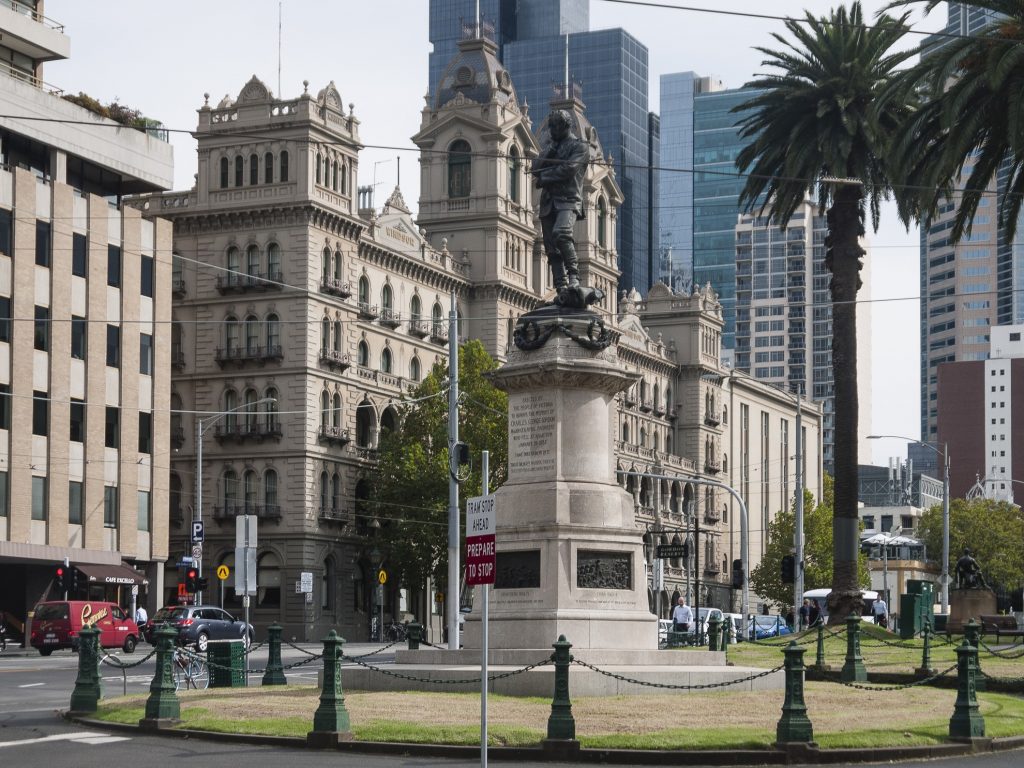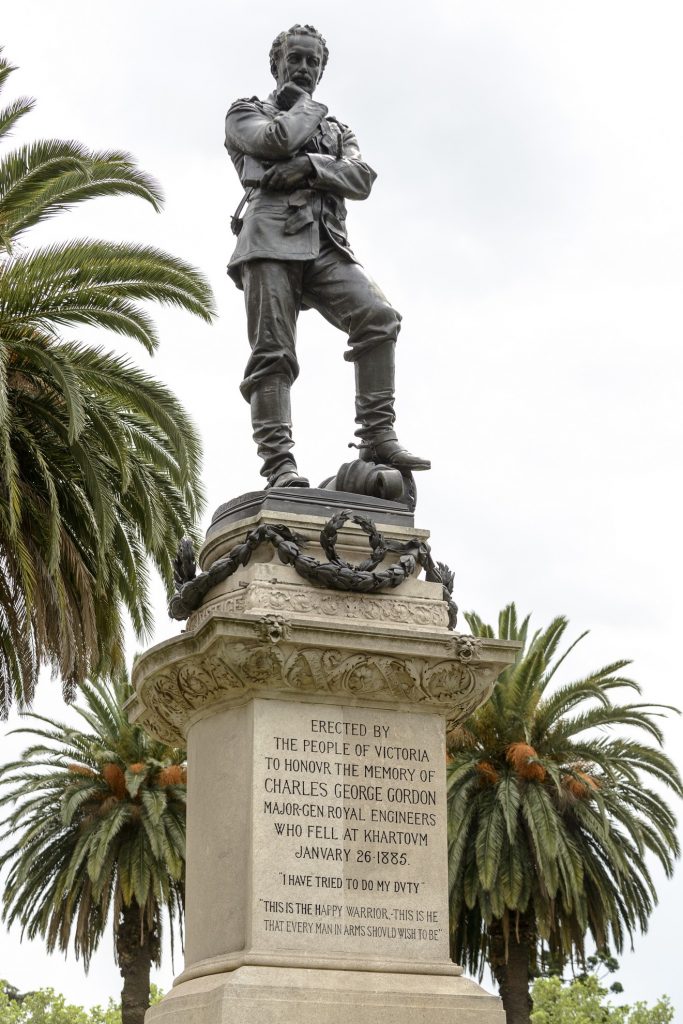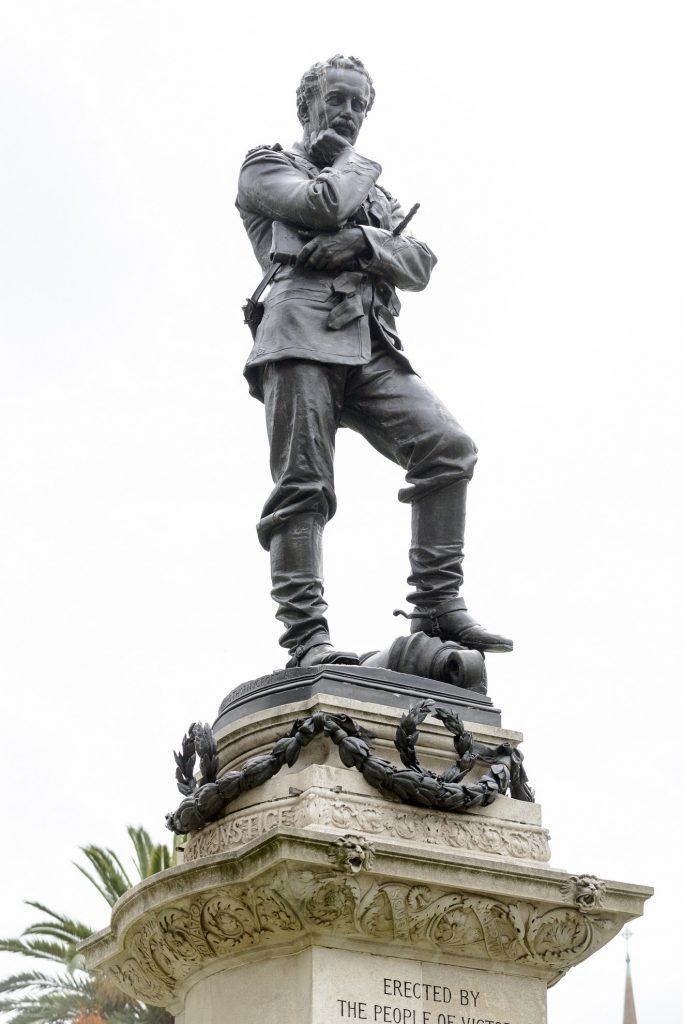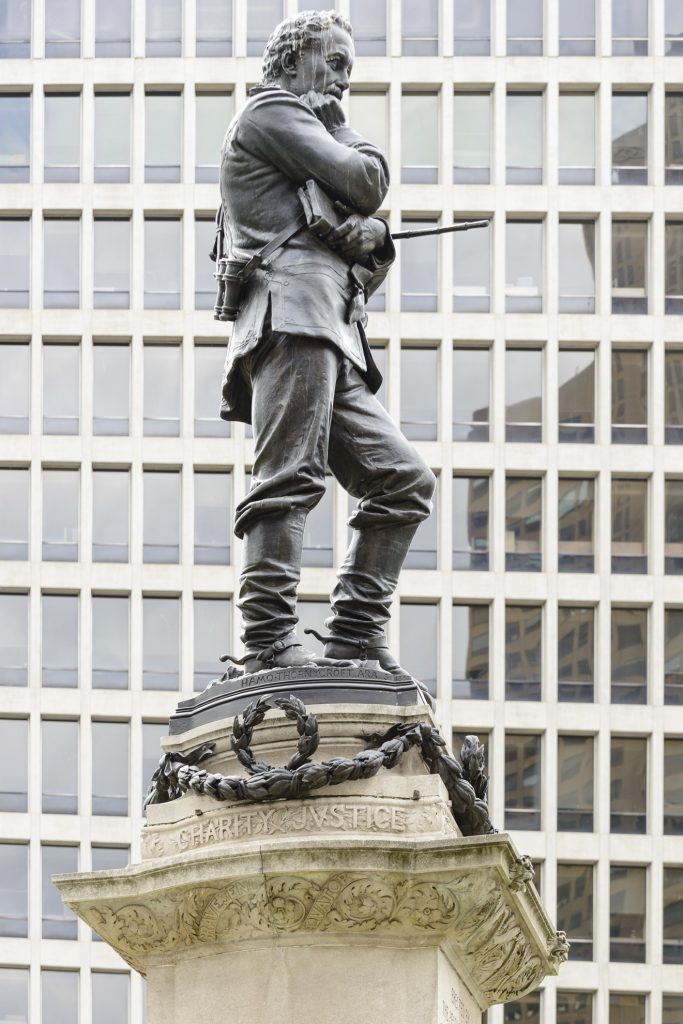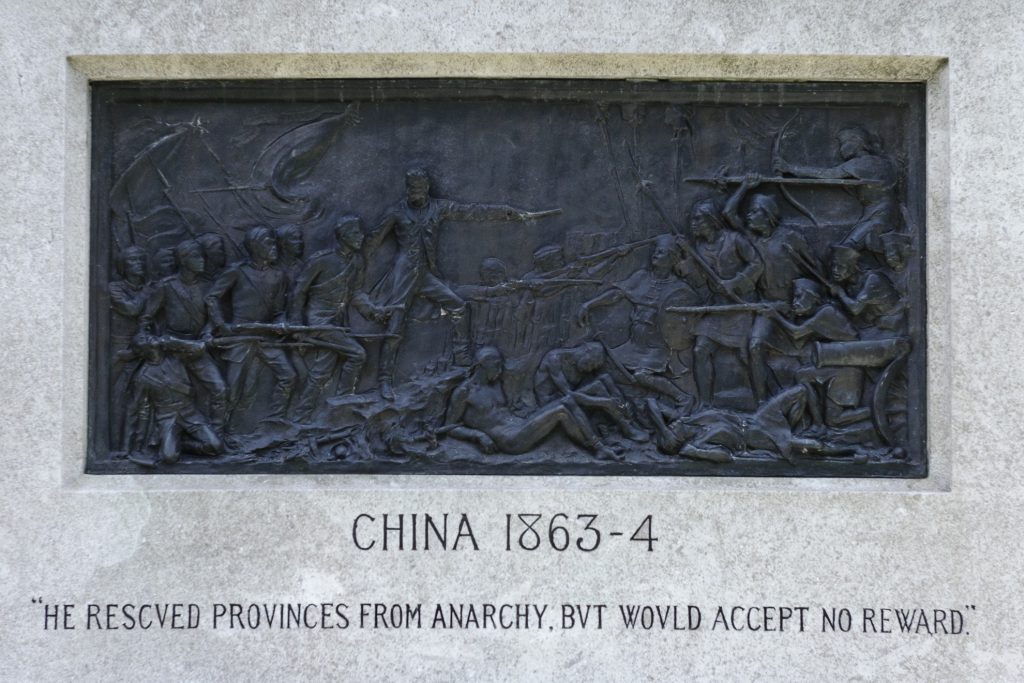Hamo Thorneycroft A.R.A.Sc 1887: J. Moore Founder / Front face: ERECTED BY THE PEOPLE OF VICTORIA / TO HONOUR THE MEMORY OF CHARLES GEORGE GORDON / MAJOR- GENERAL ROYAL ENGINEERS WHO FELL AT KHARTOUM / JANUARY 26 1885 / "I HAVE TRIED TO DO MY DUTY" / "THIS IS THE HAPPY WARRIOR – THIS IS HE THAT EVERY MAN IN ARMS SHOULD WISH TO BE”.
General Charles Gordon Memorial, Sculptor Hamo Thornycroft; founder J. Moore, Limestone, Harcourt granite and bronze memorial, 1887
Gordon Reserve, cnr Spring & Macarthur Sts
Summary
Location: Gordon Reserve, cnr Spring and Macarthur Sts
This bronze statue depicts General Charles George Gordon holding his cane and Bible. In heroic style, the general stands over a shattered cannon, presumably to symbolise his ultimate triumph over the trials and tribulations of military victory and defeat. Four bronze bas-reliefs feature on the limestone base, each depicting one of four key stages in Gordon’s life: his victories in China, his charitable activities in Gravesend, his governorship in Sudan and his death in Khartoum. In part, the inscription reads: ‘I have tried to do my duty / This is the happy warrior – this is he that every man in arms should wish to be’.
Gordon, the ‘Great Christian General’, was one of the most popular Englishmen of his day, and his reputation was forged on the battlefield and through his Christian activities at Gravesend. During his appointment as secretary to the viceroy of India in 1880, Gordon became unpopular with the government of the day for passionately campaigning for native rule in countries such as Botswana, South Africa and Ireland. Gordon met his death 1885, when as governor-general of the Sudan he refused to evacuate Egyptian forces from Khartoum, believing this to be unsafe.
Gordon’s death was mourned throughout the British Empire. So great was the Australian public’s response that a fund to produce a copy of Thornycroft’s London monument for Melbourne was heavily oversubscribed. Perhaps due to oversubscription, Thornycroft produced the four reliefs for the limestone base, which are not found on the London statue. Although Gordon did not set foot on Australian soil, the monument is of great historical importance; his death prompted the dispatch of the first Australian troops overseas, a regiment from NSW.
The statue was unveiled on 26 June 1889.

